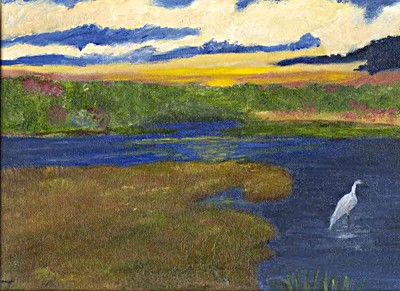All Nonfiction
- Bullying
- Books
- Academic
- Author Interviews
- Celebrity interviews
- College Articles
- College Essays
- Educator of the Year
- Heroes
- Interviews
- Memoir
- Personal Experience
- Sports
- Travel & Culture
All Opinions
- Bullying
- Current Events / Politics
- Discrimination
- Drugs / Alcohol / Smoking
- Entertainment / Celebrities
- Environment
- Love / Relationships
- Movies / Music / TV
- Pop Culture / Trends
- School / College
- Social Issues / Civics
- Spirituality / Religion
- Sports / Hobbies
All Hot Topics
- Bullying
- Community Service
- Environment
- Health
- Letters to the Editor
- Pride & Prejudice
- What Matters
- Back
Summer Guide
- Program Links
- Program Reviews
- Back
College Guide
- College Links
- College Reviews
- College Essays
- College Articles
- Back
Summer Wetland in New Jersey
Did you know that wetlands act as a "speed bump," slowing down floods and hurricanes? Did you know that wetlands are also natural water filters that trap and absorb harmful bacteria and sediments? Only recently have I begun to understand the economic and environmental benefits of wetlands. This past summer, I had a very unique experience to work with environmental scientists at the Meadowlands Environmental Research Institute (MERI) in Lyndhurst, New Jersey. As an intern, my responsibility was to analyze the balance of nutrients of a restored wetland under the preservation effort by the NJ Meadowlands Commission. I must admit that I wasn’t very excited about my job at first, as I used to share the same negative view with most people - wetlands are places for bugs, unpleasant odors, and household and industrial waste. Largely because of this view, many wetlands throughout the world have been destroyed or drained.
Besides being highly productive ecosystems and providing habitat and food resources for a wide variety and number of wildlife, wetlands have important filtering capabilities such as retaining nutrients and pollutants, and reducing sediment that would clog waterways. A constructed wetland is an artificial wetland, marsh, or swamp created mainly to treat contaminated water. Harmful substances, such as toxic chemicals, pesticides, or animal waste, are often introduced into bodies of water like streams, rivers, and lakes. So how do wetlands help? Wetlands reduce the amount of these harmful substances that enter a body of water by acting like a filter. When these substances enter a wetland, before reaching the water body, wetland plants will take the harmful substances into their roots and convert those into less harmful ones. Harmful substances may also be absorbed in wetland soil, where bacteria and other microorganisms break the substances down so they are no longer harmful. That is why wetlands are often compared to human kidneys.
The possibility that wetlands in the Meadowlands NJ accumulate contaminants brought on to sites by tidal inundation has been a concern to regulatory agencies. My project was related to one of the wetland enhancement sites restored by the NJ Meadowlands Environmental Commission. Sample water collection was taken daily in order to determine what particular balance of nutrients and sediments the wetland possesses. At each sampling event, water samples were brought back to the laboratory and analyzed for nutrients, heavy metals, pesticides, and more. Field parameters were also taken, such as pH, temperature, conductivity, and salinity. My favorite part of the internship was traveling to different sites around the Meadowlands to collect water samples with the staff and other interns at MERI. Other than getting painful sunburns and annoying bug bites, it was surprisingly a peaceful and relaxing experience to cruise down the Hackensack River or traverse through the seemingly endless jungle of lush vegetation and wildlife.
Wetlands were long regarded as wastelands, but are now recognized for their ecological importance and benefits for people and animals. Despite the increased efforts of federal and local governments and private conservation organizations, wetlands are still being threatened by farming, development, pollution, vegetation loss, and a variety of other human activities. It is critical that local citizens and organizations collaborate in order to find ways to educate public, improve the quality of remaining wetlands and prevent further destruction. These wetlands are very beneficial to us, and deserve a high level of respect and deliberation. The summer internship has taught me a lot more than just few research techniques. I spent a lot more time than I anticipated doing field work and helping out with a variety of other projects to address the environmental concerns of the District. Along the way, I realized that environmental science is not just an academic field of studying the environment systems. It is about understanding how our individual lives and the environment are closely connected and being active participants in shaping a sustainable future together. Thanks to the staff at MERI and my mentor, Dr. Artigas.

Similar Articles
JOIN THE DISCUSSION
This article has 2 comments.
